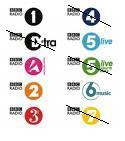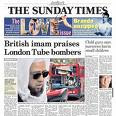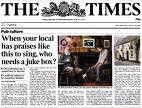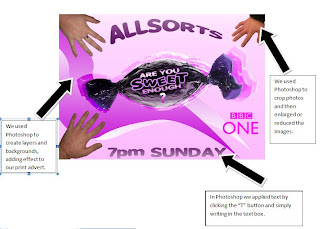Allsorts documentary
Question 1. In what ways does your media product use, develop or challenge forms and conventions of real media products?
Our media product uses and follows the code and conventions. It does not develop or challenge codes and conventions as we wanted our work to fit in with professional media products.
Interviews
First of all, i have followed code and conventions by framing the interviews in a similar way to professional products. When researching documentaries i discovered that the interviewee is always position to either the right or left of the screen is in medium close up or mid shot and also their eyeline is around 1/3 down the screen. Below is an example of an interview from a professional documentary and one from the sweets documentary we made.

Shot taken from youtube "Betty White interview"

Above is a shot of Beryl Evans in mid shot which follows the codes and conventions.
Graphics
I also followed the code and conventions of graphics, as when researching documentaries i found that during an interview graphics are always placed in the opposite bottom corner from where the interviewee is sitting. It usually displays the interviewees name and either their age, occupation or relevance to the topic. Moreover, as with most documentaries the narrative structure is linked and in topic order. For example, an interview with a mother who lets their children eat lots of sweets is followed by an interview with a dentist, followed by a montage of newspaper articles about health problems and sweets.Our documentary is non linear with no narrative. This is similar to most documentaries that are shown on television.
Cutaways
Another code and convention that has been followed is the use of cutaways during and between interviews. The cutaways link in with the chosen topic that the interviewee is talking about. Below are example of this.
 Interview
Interview
 Cutaway
Cutaway
 Interview
Interview
This is a cutaway from the documentary,"Dave West - trouble at the top".
 Interview
Interview
 Cutaway
Cutaway
 Interview
Interview
This is a shot from my media product where the voiceover is talking about variety of sweets and therefore lots of shots of different sweets and chocolate is used. This particular shot is of a person's hands breaking up chocolate and has been put in fast speed.
Editing
A code and convention of documentaries that i discovered while researching is that the questions from the interviews are always edited out so you can only hear the answers. I also did this by using adobe premiere and used the razor tool. This ensured that the product was of a professional stantard. I also added effects such as speeding up and slowing down footage, for example in the opening sequence i have sped up the sequence where the hands are taking the sweets to add effect and make it interesting. I have also used fades in my documentary in both the footage and the music to make it more visually impressive. If you look at the previous post called "Editing" there is more information.
Voxpops
Like most documentaries i have watched and analysed, i have included voxpops in the running order. Voxpops are usually shot in a mise en scene that matches the subject matter. For example, in my documentary we have shot the voxpops in the local shopping street as we needed a variety of ages,gender and ethnicity because the target audience for our documentary is families.

This is a shot from my documentary of one of the interviewees from a voxpop. As you can see we interviewed the woman in local high street. We asked "What is your favourite sweet and why?"

This is a voxpop from "Late edition- climate change". As you can see the interviewee is positioned in front of what looks like a green house which is a fitting mise en scene for the chosen topic.
Voiceover
For our voiceover, we used a female aged between 25-30 with an informal tone and no strong accent, as we believe she fits our target audience and she has a bubbly voice which fits in with the light hearted topic of sweets. A code and convention of documentaries is that the voiceover must fit in with the target audience and the topic and also it is usual that the voiceover can represent someone who would potentially watch the programme.
Here is a clip from my documentary.
Archive material
As with most documentaries, i have included archive material. An example of archive material is images that have already been filmed nad are then edited into a programme as clips or sequences to illustrate the past. In our documentary we have used footage from the "Charlie and the chocolate factory" film, for the interview where the children are fantasizing about an imaginary world made out of sweets.
Below is a screen grab from my documentary where this archive footage is used.

This is a screen grab of a documentary about world war 2 below. Archive footage is used to show the soldiers marching.

Music
For our documentary we used "Lolliopop" by the Chordettes, "Pure imagination" from Charlie and the chocolate factory, and "Lollipop" by Mika. As you can see all of the songs tie in with the genre and topic of the documentary. For example we have placed the song "Pure imagination" while the children are imagining a world made of sweets, therefore we have yet again followed the code and conventions of documentaries. As with most media products that involve copyright music, it is important that the label is contacted. Below is an email i sent to Universal music group to ask for permission to use Mikas song "Lollipop".

......................................................................................................................................................................
Question 2. How effective is the combination of your main product and ancillary text?
Print advert
Below is the script that matches this audio cilp incase the clip does not play properly.
There are many ways in which i have created coherence across my media products. First of all the title "Allsorts" is prominent in all three productions as it is important that the audience are familiar with the title if they wish to find it in the tv guide etc. Another important factor that i have included on all three media productions is the channel and scheduling. These are probably the most important things to include as if this information isn't present then the audience won't know when to watch "Allsorts". As you can see on the print advert below, "BBC" is prominent and also on the radio trailer, the last word spoken in BBC as this follows the code and conventions so the audience will always remember what channel the documentary is being shown on.
Below is the script that matches this audio cilp incase the clip does not play properly.
We have used the same person for the voiceover on both our documentary and our radio advert so it shows a link between the two productions. The slogan "Are you sweet enough?" is included on the print advert on the sweet and also it is the first thing the voiceover says in the radio trailer. Having a slogan is a code and convention of all advertisements whether radio trailer or print advert.
Below is the script that matches this audio cilp incase the clip does not play properly.
We have included extracts from the programme in our radio trailer as it draws the audience in and catches their attention. For example, our first extract is of the old women talking about the size of children nowadays. This is quite a humourous clip and so attracts the audience to carry on listening.
Below is the script that matches this audio cilp incase the clip does not play properly.
As you can see, the main image of our print advert is a sweet, which has been enlarged, and then different hands reaching to take the sweet. The hands are representing different members of a family as we have a childs hand, an adult males hand and a female adults hand. We have done this as our target audience is families and this links the programme and the target audience. The hands look small compared to the sweet as this adds a quirky twist to the advert.
Below is the script that matches this audio cilp incase the clip does not play properly.
The style of our products is relaxed and informal, as our documentary isn't serious topic and so a formal tone wouldn't suit. The voiceover fits in with this tone as it is lighthearted and bubbly therefore attracting our target audience of families. In our radio trailer we address the audience by asking them "Everyone has their favourite, so what's yours?". This makes the audience feel apart and makes them think about the documentary.
Below is the script that matches this audio cilp incase the clip does not play properly.
In terms of broadcasting the radio trailer will be broadcast on BBC radio as it it a BBC programme and i would place it on all BBC radio station apart from BBC radio 4, BBC 5live and BBC 7 as these are all topical radio stations where our trailer would not fit in. Also it could be shown on regional radio stations such as BBC merseyside etc. As therefore the radio trailer is reaching a larger audience thus gaining a larger viewing audience. In terms of times, i would schedule it to be broadcast on the breakfast shows and also drivetime as this is when families are more likely to be listening to the radio. If you look at the previous post "Code and conventions of radio trailers and planning" you will see the script of our trailer and i have annotated it in order to explain why i have done certain things.

The newspapers that our print advert will be placed in are "The times", "Daily mail", "Sunday times" and "The people" and more informal family orientated national newspapers. These are the newspapers that are best suited to our target audience therefore increasing the viewing audience. Also, due to the print advert being landscape, it can be displayed on billboards in town centres etc.



Heres an example of what our print advert would look like in a newspaper.

.....................................................................................................................................................................
Question 3. What have you learnt from your audience feedback?
For our audience feedback we held a focus group of 25 people in order to get in-depth feedback from a large group of people. We asked them a series of questions about our documentary and below are some statistics that generalise the feedback.
"How does our product compare to professional products?"
95% of our focus group believed our product was to a professional standard.
Sarah Harte, who believed our product wasn't said "Some of the shots were shakey and i thought there were a few problems with the sound".
"Do you believe the first five minutes are relevant to the topic and make you want to carry on watching the documentary?"
100% of the focus group raised their hand when we asked this question as they all believe the first five minutes were relevant.

George Reid said "I thought the first five minutes were very relevant as it was just jam-packed with sweets and chocolate, and it certainly made me very hungry!"
"What are the strengths of this documentary?"
Most of the participants in our focus group described the main strength as the interviews and cutaways.

Holly smith stated, "I thought the interviews were very interesting and the shots used inbetween were very creative and interesting, I loved it!"
"What are the Weaknesses of this media product?"
The main weakness that the focus group came up with was that the sound at the end was faulty which affected the end interview with the children.

" I thought the documentary was fabulous but the sound difficultys at the end kind of ruined it slightly, if you sorted the sound out then it would be a great documentary, in fact it is now"
"Do you think the print advert is effective and makes you want to watch the documentary?"
100% of the participants said that if they were to see the print advert then they would definately try and tune in to watch the documentary.

"I thought the print advert was really effective because the colours are very bright and really catches my eye, it looks really upbeat and cheerful"
"Do you think the radio trailer is effective and makes you want to watch the documentary?"
95% of our focus group said that they would watch the documentary if they heard the radio trailer.

"I thought the radio trailer was quite effective, the music in the background was very uplifting and it just showed that the programme wouldnt be about dark and depressing matters, which is good in my eyes"
Below, are some audio recordings of some further audience feedback.
Stacey cartwright, 15 years old, pupil of weatherhead high school.

Joel Johnson, 23 years old, Fashion student at liverpool university.

Diane Black, 51 years old, Civil servant.
.....................................................................................................................................................................
Question 4. How did you use media technologies in the construction and research, planning and evaluation stages?
For my production I used many different types of technology, without which my media product would not be possible. Luckily, i attend a media arts college and therefore have a wide range of media products available to me ensuring that i produce the best of my ability.


The actual equipment i used can be seen above. From left to right you can see "Adobe Photosop" , then a tripod, a voice recorder, and clip on microphone, video camera, "Adobe Premiere" and i am looking at the digital camera.
First of all, i used a digital camera for such tasks as taking the pictures for our print advert and also for taking pictures of ourselves carrying out such tasks as filming, so that we could include them on our blog as proof of filming. Below are pictures we took for the print advert.


A big contribution to our documentary is the video camera. We used the camera to film all the shots and also using a tripod was a huge help to ensuring a steady camera and thus making such actions like panning easier. We also used the video camera for audience feedback as it's a more interesting way of gaing information and thoughts from our target audience. Below are pictures, showing me using a camera.

Adobe Photoshop had obviously been a major help while creating our print advert. Without it we wouldn't have been able to carry out such tasks as cropping,enlarging and adding captions

Without Adobe premiere, our documentary would not be to a proffesional standard and therefore not successful. Adobe allowed us to capture our film footage and choose the cuts we wanted. Once we had choosen our footage, Adobe allowed us to speed up cutaways such as the opening sequence and also add graphics to interviews. It also allowed us to play with the audio levels which we struggled with.













